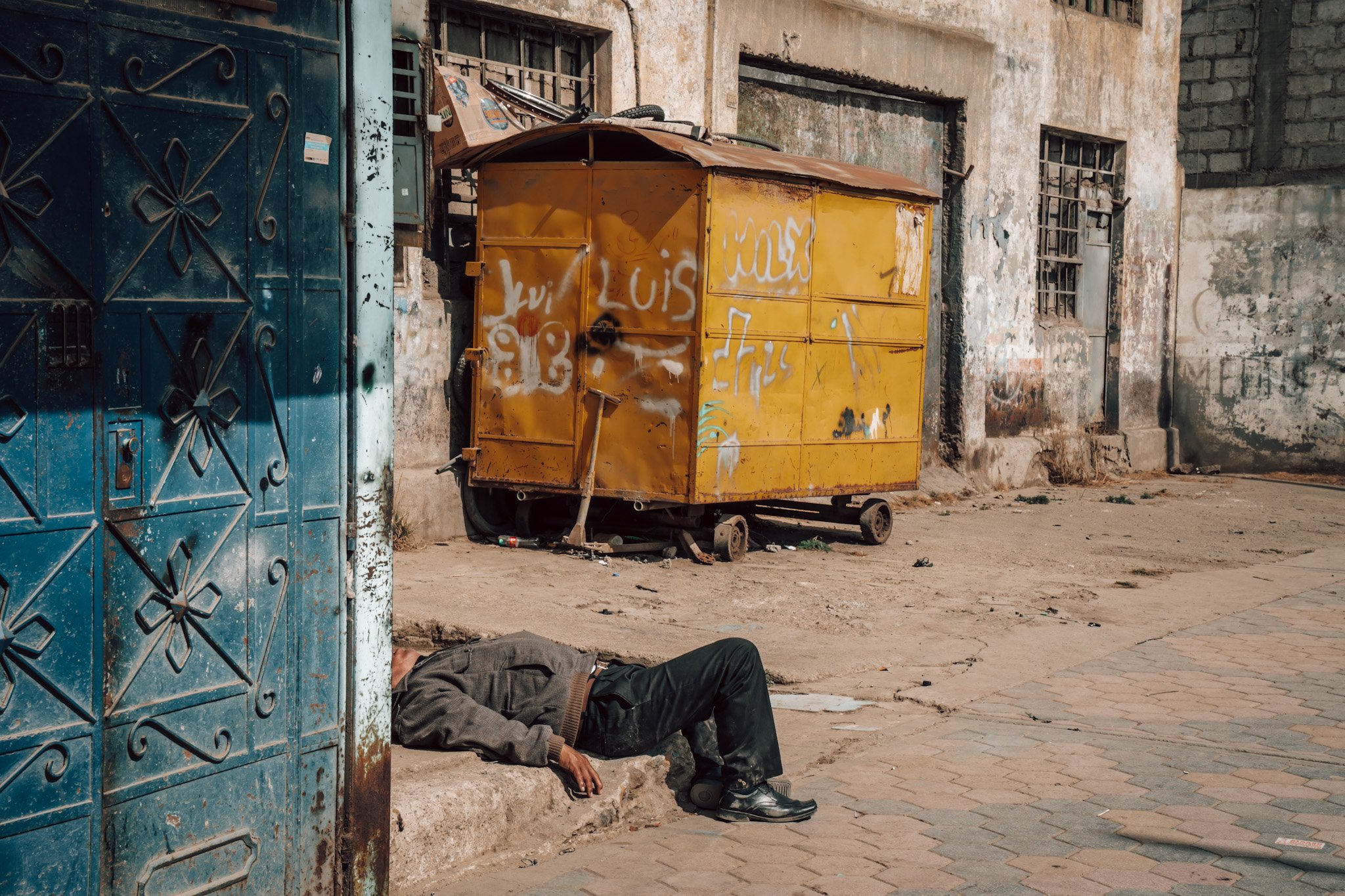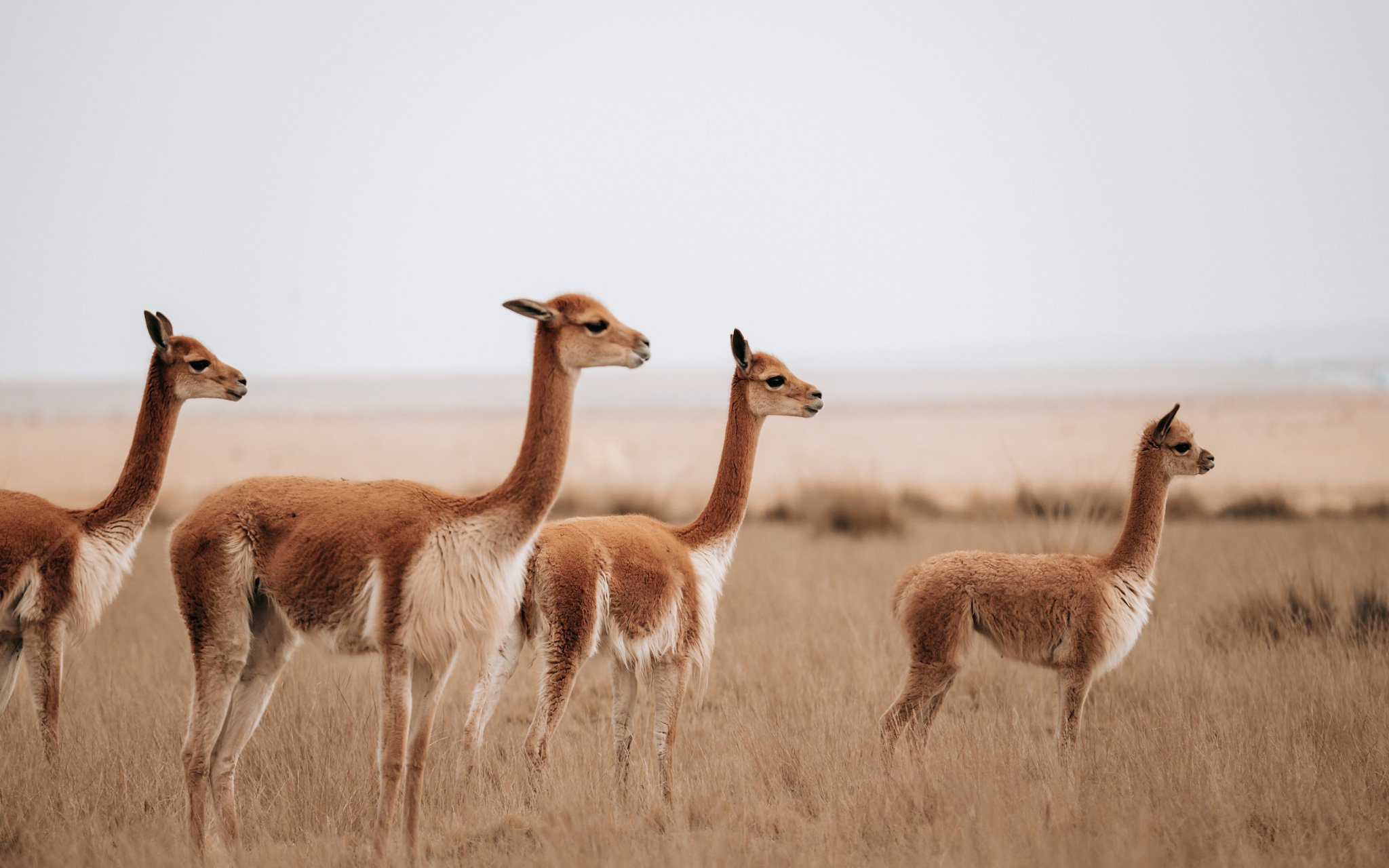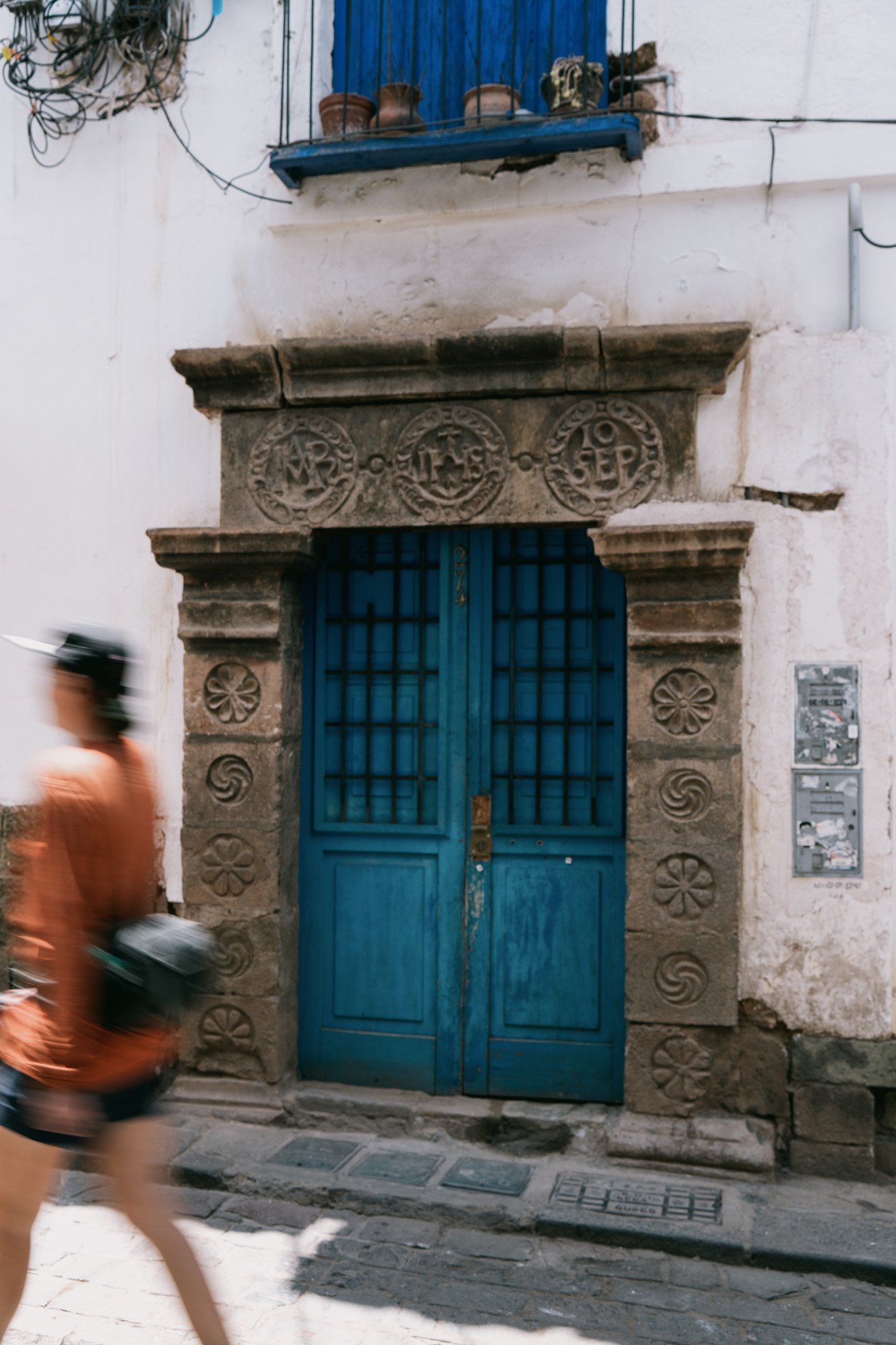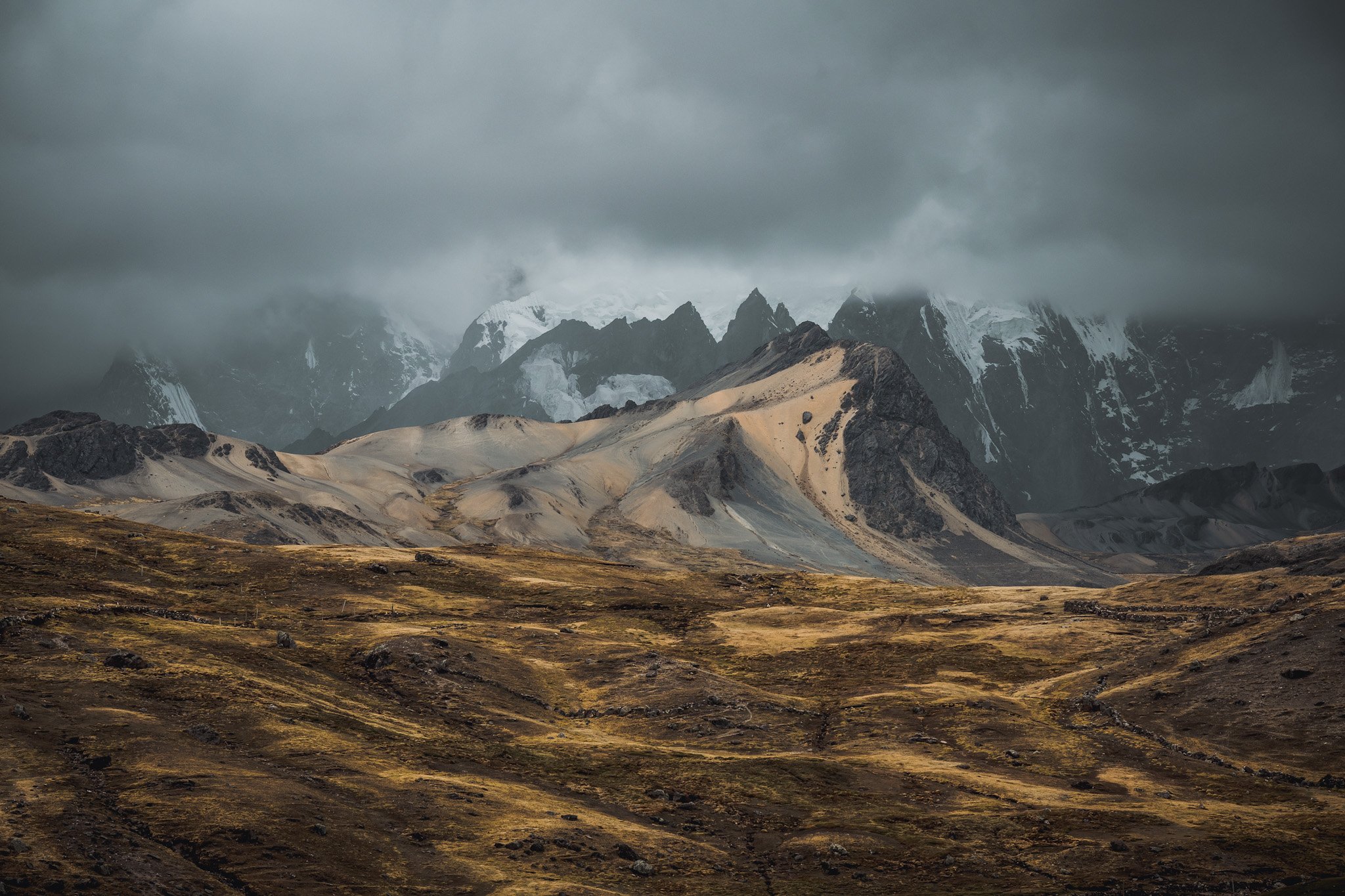Perú - Oyón to Titicaca
We had to postpone our plan to ride a little on the road from Oyón for a few days. Although the road is marked as a highway on the Google maps, it is still under construction and with excavators without central luberication this also takes its time.
Shortly before the city of Cerro de Pasco where we went to the long-awaited highway, a pretty bad smell from the passing river came to us. In the middle of the city is one of the largest and most yielding silver mines in the world. The clarifiers stink and glow in all colors. The pollution of the environment by lead, cadmium and other heavy metals has led to a health crisis in the city. A 2006 law, which provides for the evacuation of all residents and the relocation of the city, has not yet been implemented - a pretty sad town.
Driving on the road for a few days is really good for our heads. We see some vicuñas in the steppe. They are wild animals in Peru and are usually not bred or kept. They are very pretty to look at and their fur is softer than cashmere wool - but we didn't get close to them to pet them.
We also past other ugly mines.
Two day stages before Cusco we take a bus, Felix has had very strong cough for a few days. We have to wait a few hours and used the time for a long overdue bike wash.
The doctors in Cusco have diagnosed Felix with bronchitis and first prescribed antibiotics and "no cycling for at least two weeks". We are looking for an apartment with a little more space and a kitchen. A beautiful roof terrace with a view over the city was included in the price.
Cusco is really a very beautiful city, especially the old town center (Centro Histórico).
So close to Machu Picchu there is a lot to learn about the Incas and to discover traditional crafts. Very impressive is their very laborious architectural style. Some stones have up to 12 chiseled edges.
Due to Machu Picchu and other sights, Cusco is very touristy and crowded. That didn't bother us much, but the fact that you really get asked for a massage at every corner or take a photo with a lamb decorated in rainbow colors, became quite annoying after a while.
Through the boring forced break we became a little creative and also hone our street photography skills again. We even found a few analog treasures.
One evening, at the "Plaza Mayor de Cusco", Felix buddy Richie with his girlfriend Janine showed up as a surprise. Felix was flashed, the two have taken the whole way from the Chiemsee to spend a few days with us in Peru - clowns on tour.
The next day we moved a bit through the alleys of Cusco and also visited the market. The market was very interesting for both of them but we also believe a real culture shock.
Because the two have a rental car and Felix was doing much better, we went on some trips. On the one hand we drove to the salt terraces Salineras de Maras. Here, strongly concentrated salt water flows continuously from a small hole in the mountain, which is then stored in over 5,000 pools for evaporation. Each stage of drying has its own color.
Richie and Janine also like to hike very much and because Janine is soon on a tour to Kilimanjaro, we did a little altitude training in the Cordillera Vilcanota. The highest mountain in the range is the Nevado Ausangate with 6,384 meters above sea level. The unforgettable hike "7 Lagunas" was a very long hike but we had an incredible view of the mountain and the colorful glacial lakes.
Adjacent to the Cordillera Vilcanota is the famous Vinicunca (Rainbow Mountain). We planned to start the hike in the afternoon to over 5,000 meters of altitude, because then the day tourists leave back to Cusco. And it was worth it, in the late afternoon we were the only car in the parking lot and had the impressive scenery with the "Montaña de Siete Colores" all to ourselves.
The colors are created by superimposed minerals. These sediment layers, which have formed over millions of years, have been pushed from a horizontal to an almost vertical position by plate tectonics. The contained iron oxide pigment is reddish, oxidized manganese produces pink tones, yellowish hues are caused by sulfur compounds. The reaction of copper, water and oxygen leads to blue-green discoloration. The black stripes are explained by the occurrence of granite.
Just behind the Vinicunca is the Red Valley (Valle Rojo) which of course we did not want to miss - the colors are incredible.
Some alpine plants at an altitude of over 5,000 meters remind us of the corals of our former aquarium at the Samerberg.
At the end of the day there was a beautiful view of the Nevado Ausangate with its huge glacier.
Richie is just like Felix a passionate photographer and so there was also one or the other couple photo of us.
We spent our last day together in Puno on Lake Titicaca. We went by boat to the "Swimming Islands". On the way there we were able to photograph a few typical birds of the Titicaca lake. On the one hand, the Plumbeous Rail with its colorful beak.
A Common Gallinule.
And a Slate-colored Coot with its conspicuous forehead.
The "Swimming Islands" in Lake Titicaca are small, man-made islands built by the people of the Uros from layers of reeds. It was quite interesting to learn how the islands were created and how the indigenous people live here, but it was a pure tourist rip-off, from all sides the hand for money was held up.
Otherwise, we had mixed feelings from the city of Puno, but the worst was definitely the "national Cuy fashion show" - scary! The losers of the show end up directly on the grill.
In the morning we say goodbye to the two clowns with suppressed tears and we make our way along the Titicaca lake. Richie and Janine make a detour to Arequipa before flying back to Germany in a few days. We had a really nice time together.
Every child has already heard of Lake Titicaca at the latest after the stories of Pippi Longstocking. Her father Efraim Longstocking had experienced many adventures there. It's really a very big lake and sometimes it feels like we're cycling along a coastal road, just at 3,812 meters above sea level.
In recent days, we have noticed more and more that the size of the "Mamás" in the south of Peru is increasing more and more. Maybe it's the ceviche. Due to the countless Trucha farms (trout farming) along the lake, the Peruvian national dish is available everywhere. But after more than three weeks without cycling and with way too many sweets, we must not lean too far out of the window at the moment.
Addition: We later learned that there are usually several underskirts under the voluminous skirts. These are also called "centros" and can be up to 20 pieces. They serve to widen the skirt and give it the characteristic shape. The wide skirt is an ideal of beauty and symbolizes prosperity.
We are now leaving Peru with dreamlike memories and will hang along the border between Chile and Bolivia in the next few weeks.





































































































































































